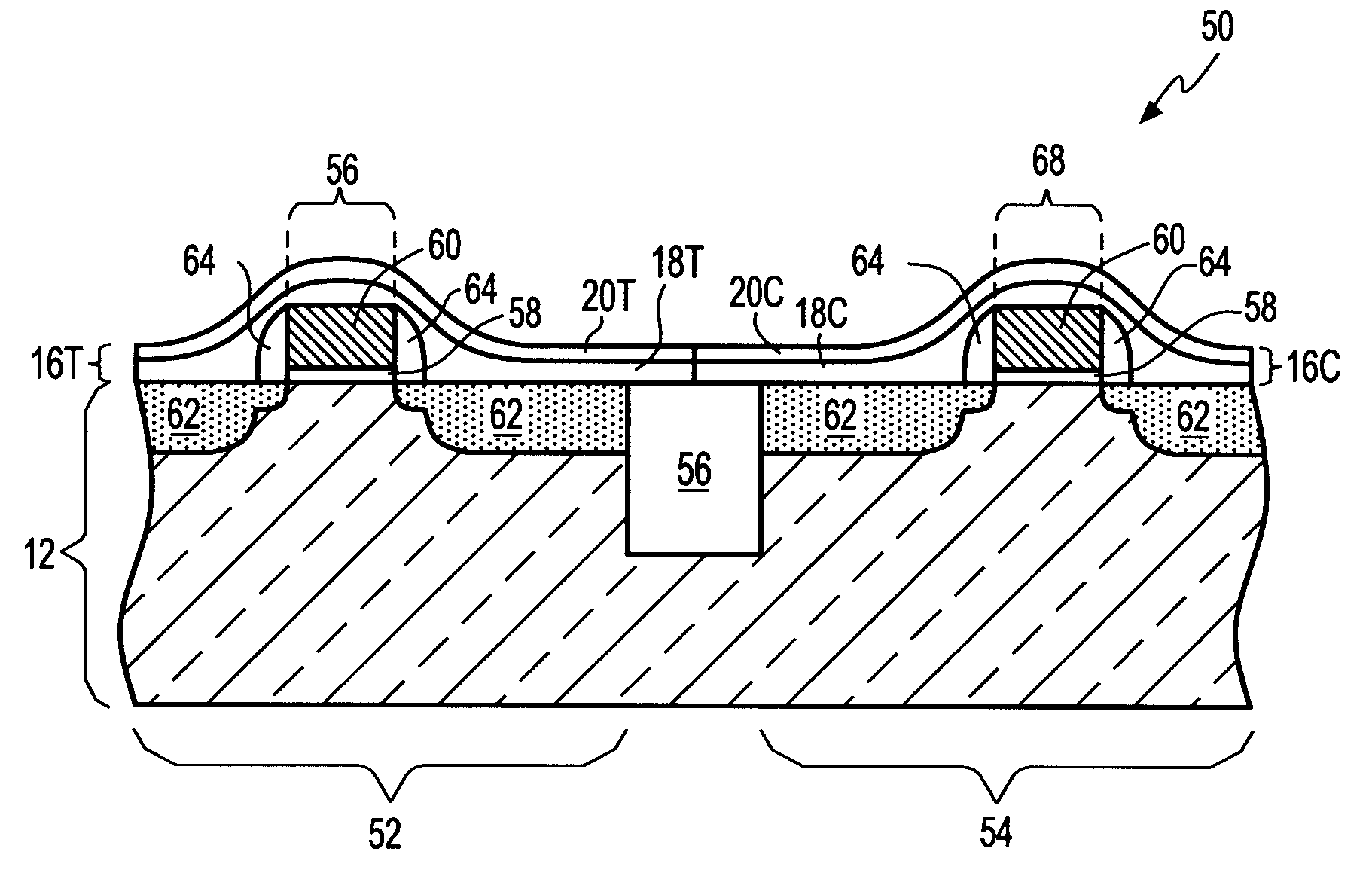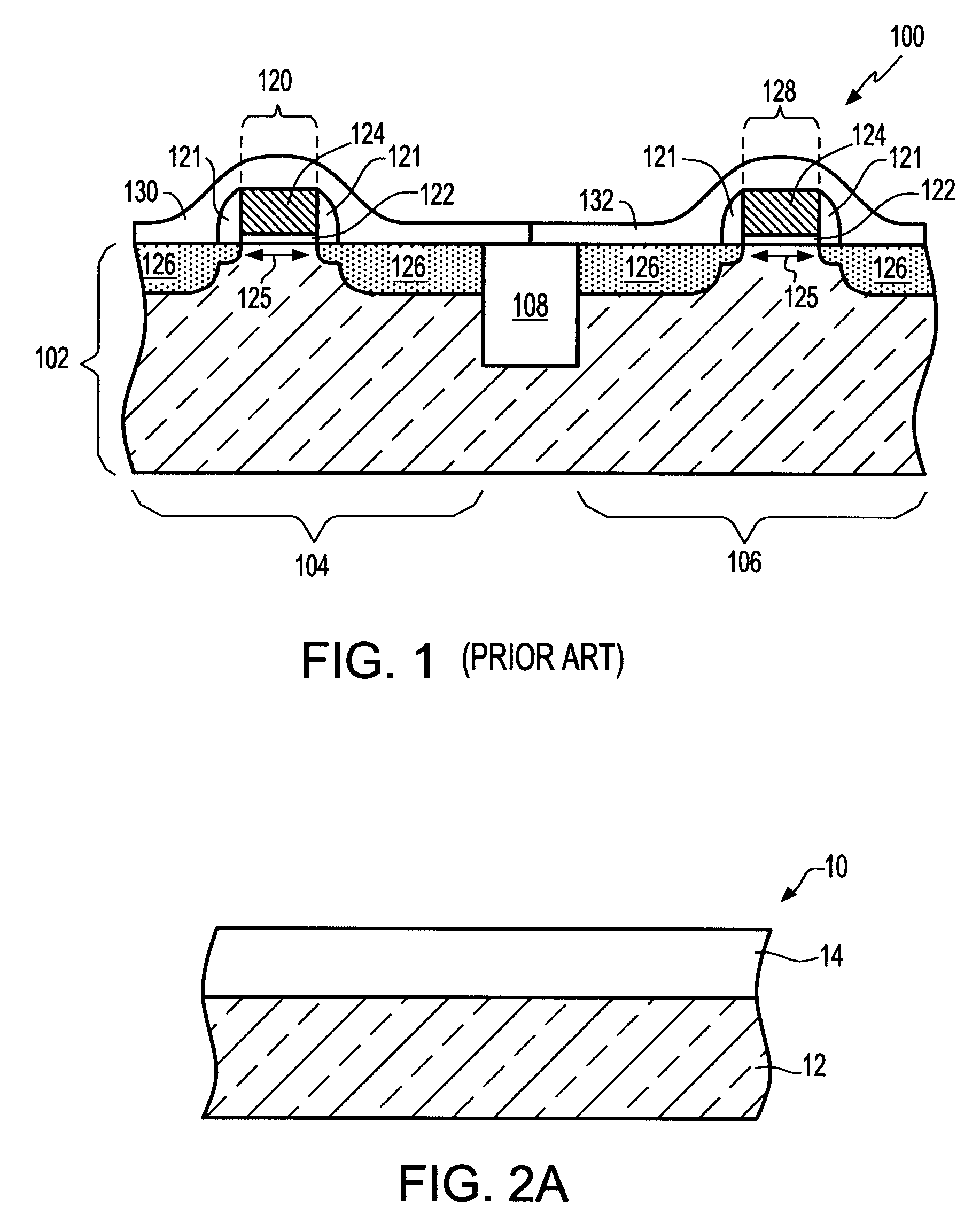Method of producing highly strained PECVD silicon nitride thin films at low temperature
a technology of silicon nitride and high-temperature process, which is applied in the direction of coatings, semiconductor devices, chemical vapor deposition coatings, etc., can solve the problems that certain elements of silicon-based transistors, silicide contacts and highly-activated dopants can be undesiredly affected by high-temperature processes, and achieve the effect of increasing the stress
- Summary
- Abstract
- Description
- Claims
- Application Information
AI Technical Summary
Benefits of technology
Problems solved by technology
Method used
Image
Examples
Embodiment Construction
[0026]The present invention, which provides a method of increasing the level of stress for an amorphous thin film stressor material by a technique in which the internal structure of the film is modified, will now be described in greater detail by referring to the following discussion and drawings that accompany the present application. It is noted that the drawings of the present application are provided for illustrative purposes and thus they are not drawn to scale.
[0027]Reference is made to FIGS. 2A-2C which illustrates the basic processing steps of the present invention. Specifically, FIG. 2A illustrates a structure 10 that includes an amorphous thin film stressor material 14 that is formed atop a surface of a semiconductor substrate 12. It is observed that FIGS. 2A-2C illustrate only a small portion of the semiconductor substrate 12 and that the inventive method can be used over the entire surface of the semiconductor substrate 12 which can include transistor devices, such as sh...
PUM
| Property | Measurement | Unit |
|---|---|---|
| thickness | aaaaa | aaaaa |
| temperature | aaaaa | aaaaa |
| time period | aaaaa | aaaaa |
Abstract
Description
Claims
Application Information
 Login to View More
Login to View More - R&D
- Intellectual Property
- Life Sciences
- Materials
- Tech Scout
- Unparalleled Data Quality
- Higher Quality Content
- 60% Fewer Hallucinations
Browse by: Latest US Patents, China's latest patents, Technical Efficacy Thesaurus, Application Domain, Technology Topic, Popular Technical Reports.
© 2025 PatSnap. All rights reserved.Legal|Privacy policy|Modern Slavery Act Transparency Statement|Sitemap|About US| Contact US: help@patsnap.com



